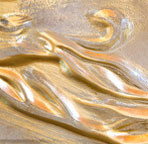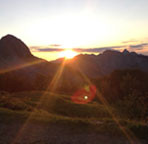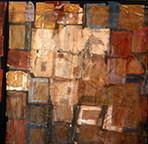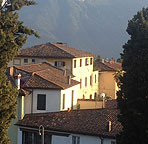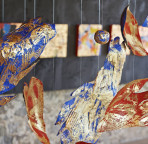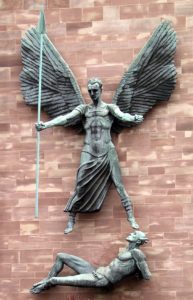
Jacob Epstein, St. Michael and the Devil, 1958.
In his book, All God’s Angels, (Paraclete Press, 2016) Martin Shannon describes the artist’s task in creating images of angels: “The Scriptures provide us with verbal descriptions of events in which angels appeared in visible form. Over the centuries, artists have applied their skills and informed imaginations to fill in between the lines. . . . Where words fail, colors and shapes can take up the message.”
Speaking of the angels in the Revelation to John, the final book of the Bible and the book of new beginnings. Shannon says: “If we dare take John as our example, then ultimately what the angels do for us is reveal God. For it is never the intention of the angels that our attention should rest on them.”
Sculptor, Jacob Epstein employed traditional imagery for his monumental St. Michael and the Devil, (1956–58). Over looking the entrance to Coventry Cathedral, the warrior angel strides over a bound and defeated Lucifer. Working at a time when many artists were turning away from representational work in favor of more highly abstracted images, Epstein continued to work with recognizable human forms. In a 1958 interview with the BBC, Epstein defended his use of representational form, “My idea has always been to express human ideas and aspirations. [My works] are images of whole people or elemental emotions . . . I have been fundamentally truthful to natural forms in my work. I have never tried to create purely abstract forms.”
As Epstein’s work pursued spiritual and emotional truth, Helaine Blumenfeld’s work also seeks to go beyond, “where words fail.”
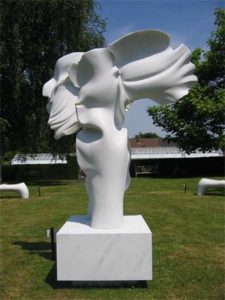
Helaine Blumenfeld, Angels: Harmony, 2006.
In a review of an exhibit of her work at Salisbury Cathedral in 2013. Blumenfeld stated: “For me, sculpture has been a journey to try and reach beyond the physical, emotional, and cultural boundaries that limit our perception as well as our growth as spiritual beings. Through sculpture, I have tried to create a visual language that does not depend on words but on images for its impact.”
In a 2016 interview in Aesthetica Magazine she elaborated: “In trying to represent human feelings and dreams and ‘the mysteries of the human soul.’ I began by depending on the human figure and gestures. Over time, the search for this led me away from conventional forms of representation. I began to discover abstracted fragments could convey intense emotion, combining physical elements could suggest movement. The further I was able to abstract gestures and figurative references the closer I was to developing my own language of form.”
” . . . My hope is to create a continuous dialogue between the viewer and the sculpture, which the ambiguous space between abstraction and figuration encourages.”
“Each piece I create is message, and it’s the message, not the messenger, which is important, Art is a revelation, both for the artist who receives a vision and for the viewer to whom it is transmitted.”

